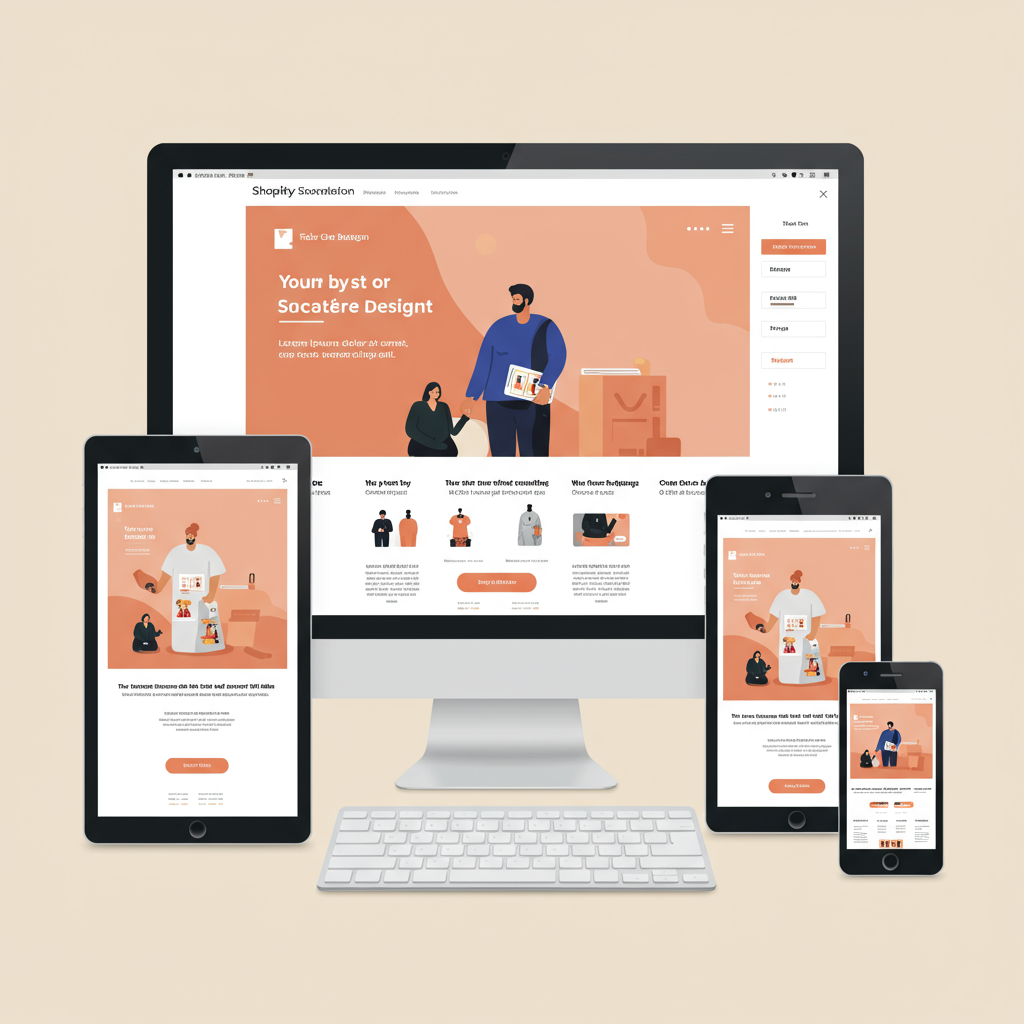Essential Design Strategies for Merchants to Thrive in the E-commerce Landscape
As a merchant navigating the ever-evolving e-commerce landscape, I know firsthand that your Shopify homepage isn’t just a digital storefront; it’s the grand entrance to your brand’s world.
In 2025, with competition fiercer than ever, a well-designed homepage is absolutely critical for converting visitors into loyal customers. It’s your first impression, and often, your last chance.
I’ve spent countless hours analyzing what makes a Shopify homepage truly shine, and I’m excited to share my top tips to help you optimize yours for the coming year.
My primary focus for 2025 is always on the user experience (UX). A seamless, intuitive journey for your visitors is paramount. If they can’t find what they’re looking for quickly, they’ll leave.
First, let’s talk about the ‘above the fold’ section – your hero. This is the very first thing visitors see without scrolling. It needs to grab attention instantly.
I recommend a high-quality, visually stunning image or a short, engaging video that immediately conveys your brand’s essence and unique selling proposition (USP).
Overlay this with a clear, concise headline and a prominent Call to Action (CTA). Think ‘Shop New Arrivals’ or ‘Discover Our Story.’ Make it impossible to miss.
Next, consider your navigation. I always advise making it incredibly intuitive. Mega menus are fantastic for stores with many product categories, allowing visitors to dive deep without feeling overwhelmed.
Don’t forget a highly visible search bar. Many customers know exactly what they want, and a quick search function is a direct path to conversion.
Below the hero, I like to showcase my best-selling products or new arrivals. Use high-resolution images and brief, enticing descriptions. This immediately highlights your popular items.
Social proof is non-negotiable in 2025. I integrate customer testimonials, star ratings, and trust badges prominently. People trust what others say about your brand more than what you say yourself.
I also believe in telling your brand’s story. A small ‘About Us’ section or a link to a dedicated page helps build an emotional connection with your audience. Why did you start? What are your values?
Throughout the homepage, I strategically place multiple, clear CTAs. These aren’t just for products; they can lead to your blog, a sign-up for your newsletter, or a special offer.
Speaking of blogs, I find that integrating recent blog posts or valuable content directly on the homepage can significantly boost SEO and establish your brand as an authority.
For 2025, I’m heavily focusing on mobile-first design. The vast majority of my traffic comes from mobile devices, so ensuring a flawless experience on smaller screens is non-negotiable.
Page speed is another critical factor I prioritize. Slow loading times kill conversions. I regularly audit my site’s performance and optimize images and code to ensure lightning-fast loading.
Personalization is no longer a luxury; it’s an expectation. I’m exploring AI-driven recommendations that dynamically display products based on a visitor’s browsing history or demographics.
Immersive experiences, like 3D product views or augmented reality (AR) try-ons, are becoming more accessible. I’m looking into how these can enhance my product pages, linked from the homepage.
Highlighting your brand’s values, such as sustainability or ethical sourcing, is increasingly important. I make sure these are visible on my homepage if they are core to my brand.
Short, engaging video content, beyond the hero section, can also be incredibly effective. Think product demonstrations or behind-the-scenes glimpses.
Accessibility is a moral imperative and a legal requirement. I ensure my Shopify homepage adheres to WCAG guidelines, making it usable for everyone, regardless of ability.
My footer isn’t just an afterthought. I use it to house essential links like contact information, FAQs, shipping policies, and social media icons. It’s a navigational hub.
Finally, I constantly A/B test different elements of my homepage – headlines, CTAs, image choices – to see what resonates best with my audience. Data-driven decisions are key.
Remember, your Shopify homepage is a living, breathing entity. It should evolve with your brand and your customers’ needs. Regular updates and optimizations are crucial for sustained success.
What do you think about these tips? I’d love to hear your thoughts and any strategies you’ve found successful for your own Shopify store.
By implementing these strategies, I’m confident you’ll create a Shopify homepage that not only looks fantastic but also drives conversions and builds lasting customer relationships in 2025 and beyond.






